- Understanding Abrasion and Corrosion in Dredging Operations
- Material Options for Pipe for Dredging
- Technical Performance of HDPE Pipe for Dredging
- ROI and Lifecycle Considerations for Procurement Teams
- Industry Applications and Use Cases
- Key Factors to Consider in Dredge Industry Pipe Selection
- How Anaconda Pipe & Hose Supports the Dredge Industry
A contemporary dredge pipe must meet several specifications. It must be resistant to the corrosive effects of seawater, chemical exposure, and microbiological activity, as well as the unrelenting passage of abrasive materials such as sand, gravel, and silt. Despite their strength and widespread usage, steel pipes corrode easily in maritime settings, necessitating costly coatings and regular replacements. They are therefore expensive in the long run. On the other hand, cutting-edge solutions, such as HDPE pipe for dredging, are designed to resist both chemical and mechanical damage, providing greater durability and a longer service life.
It is a costly error for project managers and procurement teams to evaluate choices just based on upfront cost. Higher lifespan costs, missed deadlines, and resource loss result from a less expensive material that breaks too soon. Organizations can lower maintenance requirements, eliminate downtime, and ensure adherence to industry standards by selecting a properly constructed dredge industry pipe. Selecting the appropriate pipe for dredging ensures operational effectiveness, cost savings, and dependable long-term performance, especially when backed by contemporary technologies like HDPE pipe for dredging.
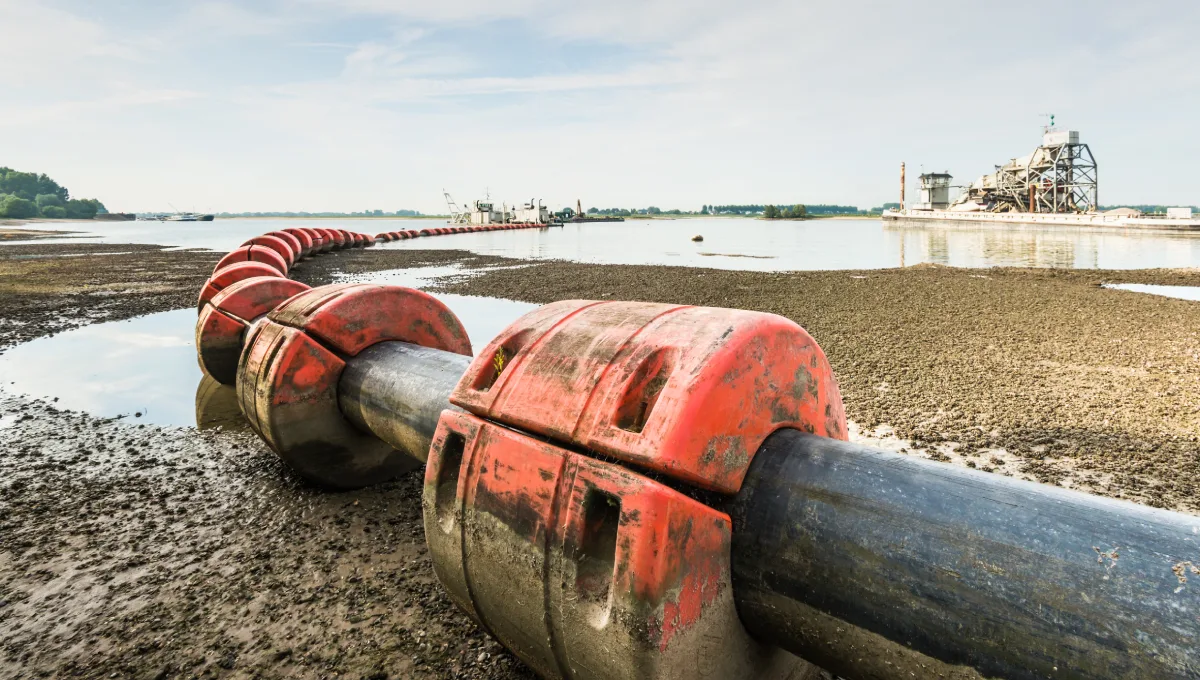
Understanding Abrasion and Corrosion in Dredging Operations
Abrasion and corrosion are the two main hazards that the dredge industry faces, and they have a direct effect on longevity. When solid materials, such as silt, gravel, and sand, pass through the pipeline, abrasion occurs, continuously wearing down the inner walls of the pipeline. This issue is particularly problematic when transporting slurry at high speeds and in areas where particles impact more forcefully, such as at bends or elbows. Even sturdy pipes will deteriorate too quickly without the right materials and design, which will shorten their lifespan and efficiency.
For every pipe used for dredging, corrosion presents an equally significant difficulty. Numerous projects take place in brackish or saltwater settings, where metal surfaces are rapidly attacked by chloride ions, resulting in pitting and structural weakness. Additional chemical exposure accelerates the degradation process in mining and industrial operations. Additionally, microbial-induced corrosion can happen, particularly in systems with stagnant water, posing an expensive yet undetectable danger.
When a dredge industry pipe fails due to these factors, the consequences extend far beyond repair costs. Unplanned downtime can delay entire projects, increase operating costs, and heighten safety risks. In high-profile operations such as harbor maintenance, coastal defense, or mine tailings management, pipeline failure can even create environmental hazards that trigger regulatory penalties.
Understanding these mechanisms is the first step toward mitigating risk. By selecting materials engineered for abrasion and corrosion resistance, such as modern HDPE pipe for dredging, decision-makers can extend service life and improve reliability. A properly designed dredge industry pipe, particularly when supported by HDPE pipe for dredging, ensures safer operations, reduced lifecycle costs, and stronger project performance.
Material Options for Pipe for Dredging
Selecting the right material for a dredge industry pipe is a challenging choice that has an immediate impact on the project’s effectiveness, expenses, and long-term performance. Before making a choice, decision-makers must carefully consider the unique benefits and drawbacks of each material alternative.
Rubber-Lined and Composite Pipes were developed to address some of steel’s weaknesses. Rubber linings offer enhanced abrasion resistance, while composite materials strike a balance between strength and reduced weight. However, these options often fall short in harsh marine conditions where chemical corrosion and continuous abrasion accelerate wear, limiting their service life.
For many recent projects, HDPE pipe for dredging has proven to be the preferred material for dredging. It can carry slurries with a high silt content without suffering major damage due to its natural resilience to abrasion. Despite being exposed to harsh chemicals and seawater, HDPE does not rust like steel does. HDPE is very lightweight, which lowers installation and transportation expenses. Additionally, its adaptability reduces the possibility of leaks or cracks in surroundings that are subject to change.
Ultimately, selecting the ideal pipe for the dredging sector involves striking a balance between long-term performance and initial cost. Steel may appear cost-effective at first, but HDPE pipe’s durability and effectiveness over time make it a more appealing option for demanding dredging operations.
Technical Performance of HDPE Pipe for Dredging
The performance of present-day HDPE systems best illustrates the technical benefits of a well-designed dredge industry pipe. Both extensive field use in harsh settings and laboratory testing have shown HDPE pipe’s excellent dredging capabilities. HDPE consistently outperforms conventional steel and composite pipes in abrasion resistance tests, particularly when subjected to moving abrasive materials, such as gravel, silt, and sand. A longer service life, less downtime, and fewer replacements are all benefits of its durability.
Corrosion resistance is another critical factor. Unlike metals, HDPE is chemically inert and does not react with saltwater, industrial byproducts, or corrosive slurries. In harsh marine or offshore environments, this resistance eliminates issues such as rusting, pitting, or structural weakening. For industrial operations that face unavoidable chemical exposure, a corrosion-proof dredge industry pipe ensures uninterrupted performance and safer operations.
Real-world applications further support these advantages. Mining firms use HDPE pipelines to move abrasive tailings in harsh chemical and wear environments. The material’s lightweight characteristics allow for quicker and more economical installation in coastal dredging projects. Its dependability in clearing silt from lakes, canals, and stormwater ponds is advantageous for municipal projects.
For procurement teams, HDPE pipe for dredging is an obvious choice for optimizing project value and lowering operating risks due to its demonstrated dependability for dredging and the lifespan efficiency of a solid dredge industry pipe.
ROI and Lifecycle Considerations for Procurement Teams
When evaluating pipeline investments, procurement heads and project managers must consider more than the upfront purchase price. The true value of a dredge industry pipe lies in its performance throughout the project’s lifecycle. While steel pipelines may appear cost-effective initially, their vulnerability to corrosion and the need for frequent replacements often drive up long-term costs. By comparison, modern alternatives offer extended service life with lower maintenance demands, significantly reducing the total cost of ownership.
Maintenance efficiency is crucial to achieving a positive return on investment. Lightweight pipelines, such as HDPE pipe, are easier to install, transport, and repair. They minimize the need for heavy lifting equipment and enable faster mobilization, which reduces both labor and logistics costs. Their flexibility also reduces the risk of catastrophic failure in shifting or unstable environments, further protecting against costly downtime.
Downtime itself is a major financial factor. Every hour of stalled dredging translates into higher labor expenses, lost production opportunities, and delayed project milestones. A dependable HDPE pipe for dredging helps mitigate these risks by ensuring reliable operation under both abrasive and corrosive conditions.
Transportation efficiency adds another layer of savings. Lighter pipes require fewer resources to move across long distances or offshore locations. For large-scale dredging projects, these savings multiply quickly.
In summary, investing in a durable dredge industry pipe directly upgrades project profitability. Lifecycle savings from reduced maintenance, minimized downtime, and lower transport costs consistently outweigh any differences in upfront price, making smart material selection a strategic priority.
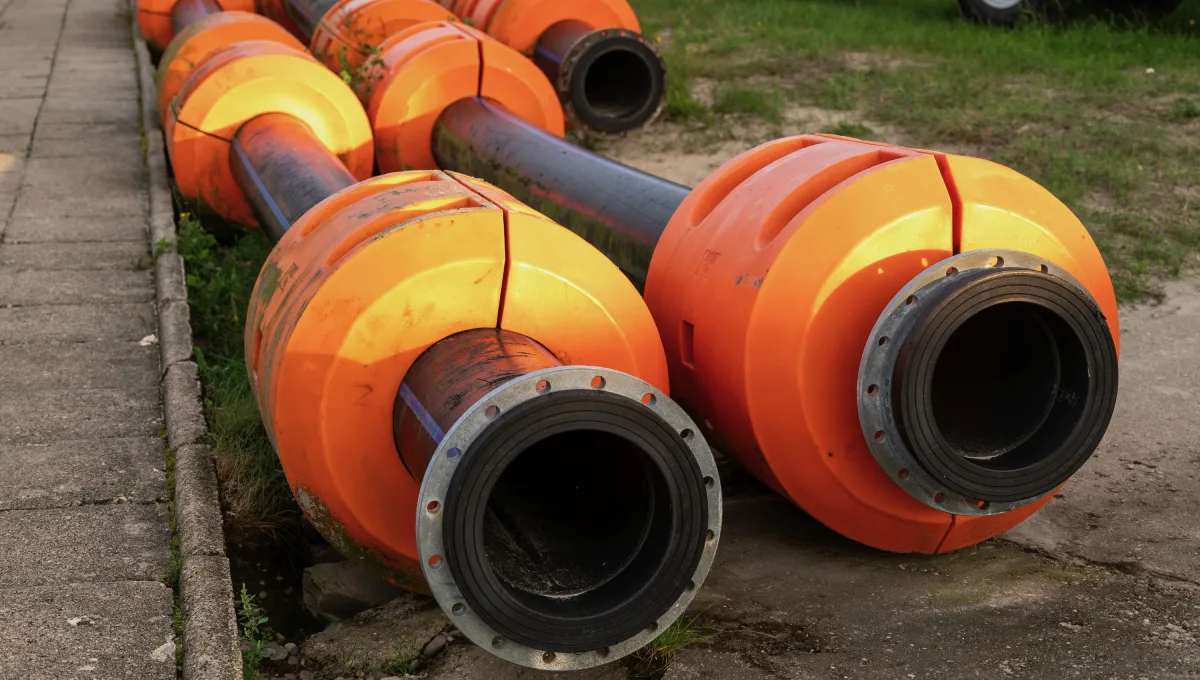
Industry Applications and Use Cases
A well-designed dredge industry pipe is versatile enough to serve multiple industries, each with unique operating requirements. Its ability to balance abrasion resistance, corrosion protection, and cost efficiency makes it an essential component in a wide range of projects.
Mining: Tailings and slurry transport in mining demand exceptional abrasion resistance. Sharp, abrasive particles place constant stress on the pipeline. HDPE systems excel in this environment, providing durability that often surpasses that of steel, which can wear down quickly. The long service life of a reliable dredge industry pipe helps maintain consistent operation and reduces costly downtime.
Oil & Gas: Offshore trenching and dredging operations primarily occur in saltwater environments, where corrosion poses the greatest threat to equipment and infrastructure. Here, corrosion-resistant materials, such as HDPE pipe, ensure structural integrity and operational safety. They allow oil and gas operators to maintain efficiency without the risks associated with metal pipe degradation.
Municipal and Government Projects: From stormwater pond dredging to harbor maintenance, public works projects require pipelines that are dependable, safe, and cost-efficient. The lightweight nature of HDPE pipelines enables faster installation, minimizing disruptions and keeping projects on schedule, a crucial factor for municipal budgets and compliance.
Military and Naval Operations: Defense projects often demand rapid deployment and absolute reliability. A strong HDPE pipe for dredging that resists both abrasion and corrosion is vital for coastal engineering, naval base dredging, and emergency response scenarios. Its portability and adaptability provide critical support in mission-driven environments.
These use cases demonstrate that selecting the right dredge industry pipe is far more than a technical choice; it is a determinant of project success, ROI, and long-term sustainability.
Key Factors to Consider in Dredge Industry Pipe Selection
Selecting the right pipe for the dredge industry requires careful evaluation of multiple factors that extend far beyond the upfront cost. Procurement leaders and engineering managers must consider environmental conditions, technical design, compliance requirements, and supplier reliability before making a final decision.
Project Environment: The operating environment is one of the most critical factors to consider. A dredge industry pipe must be able to withstand the corrosive nature of saltwater or brackish water while resisting wear from abrasive sediments such as sand, gravel, and silt. The chemical composition of the slurry can also impact long-term durability.
Pipeline Design: Dimensions such as diameter, length, flow rate, and pressure capacity need to align with project requirements. Even the strongest material will have a shortened service life if the system is improperly sized. This is where flexible options, such as HDPE pipe for dredging, provide additional value by adapting to different layouts without compromising performance.
Regulatory and Safety Standards: Every pipeline must comply with environmental and safety regulations. A reliable dredge industry pipe should meet structural integrity standards while minimizing the risk of leaks or contamination, ensuring that projects remain compliant and environmentally responsible.
Supplier Expertise and Support: Choosing the correct material is only part of the solution. Partnering with a supplier who understands dredging applications ensures proper customization, fittings, and after-sales support. With modern solutions such as HDPE pipe for dredging, decision-makers gain confidence in both the product and the supplier relationship.
Ultimately, selecting the right dredge industry pipe is about aligning technical performance with project goals. A structured, informed approach guarantees cost efficiency, safety, and reliable long-term results.
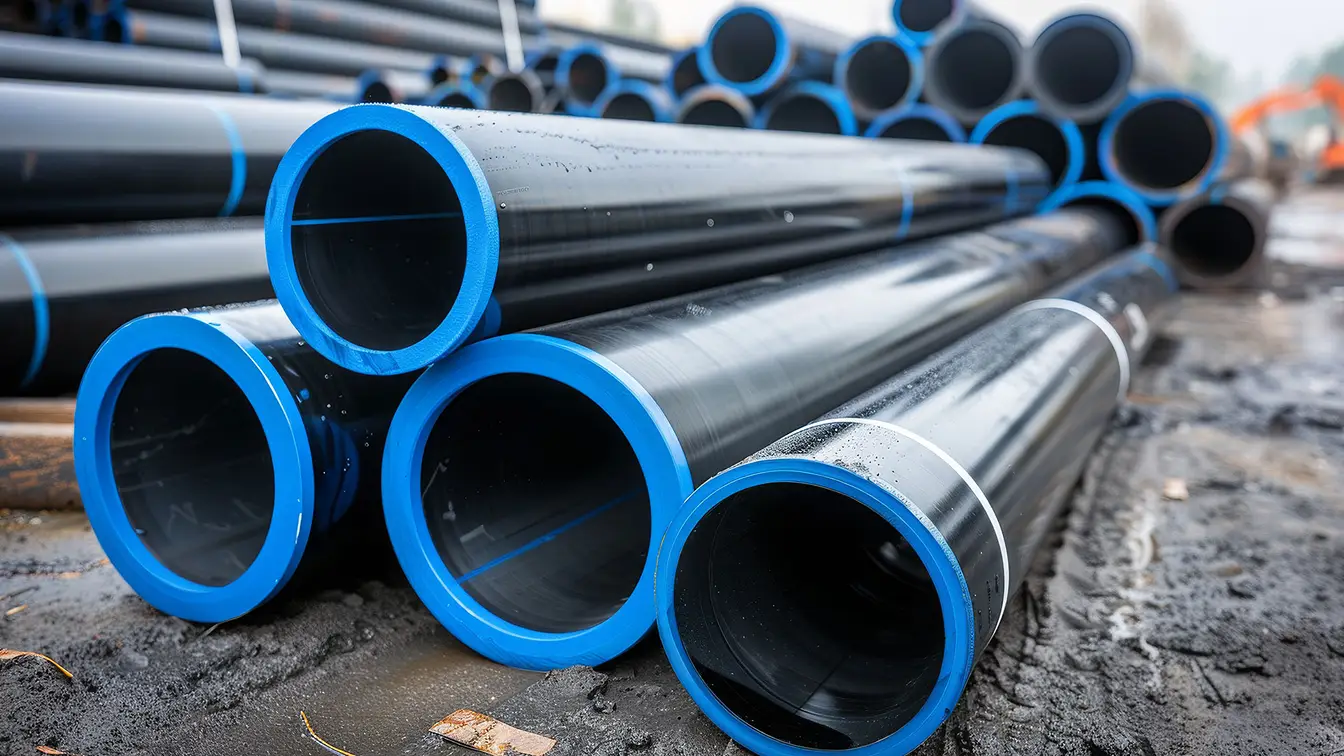
How Anaconda Pipe & Hose Supports the Dredge Industry
Delivering dependable, high-performing solutions for difficult dredging situations has been the foundation of Anaconda Pipe & Hose’s reputation. The business specializes in providing pipes for the dredge industry that are made to fit the requirements of government, municipal, mining, and energy operations. Anaconda guarantees that clients obtain pipeline systems that not only fulfill the highest regulatory standards but also function effectively under stress by placing a strong priority on both compliance and durability.
The company’s proficiency in using HDPE pipe for dredging is one of its key advantages. This material is designed to withstand corrosion from seawater and strong industrial chemicals, as well as the continuous abrasion from sediment-heavy slurries. In contrast to conventional steel substitutes, these flexible and lightweight solutions offer long-term dependability at a lower cost of transportation and installation. This leads to quantifiable savings and less downtime without compromising performance for project managers and procurement teams.
Customization adds even more value to Anaconda’s products. To maximize performance under particular working circumstances, each dredge industry pipe system can be outfitted with customized fittings, hose integration, and project-specific designs. This ensures that pipes are strategically aligned with project goals, in addition to being operational.
Purchasing equipment is only one aspect of working with Anaconda for decision-makers. It offers reliable after-sales service, lifetime assistance, and access to technical knowledge. Anaconda offers reliable and flexible solutions for projects involving military operations, offshore trenching, or municipal dredging. The business remains a reliable partner for selecting the best pipe for the dredge industry due to its proven performance across various sectors. Supported by contemporary technologies like HDPE pipe for dredging, Anaconda helps businesses achieve resilience, efficiency, and long-term cost savings.


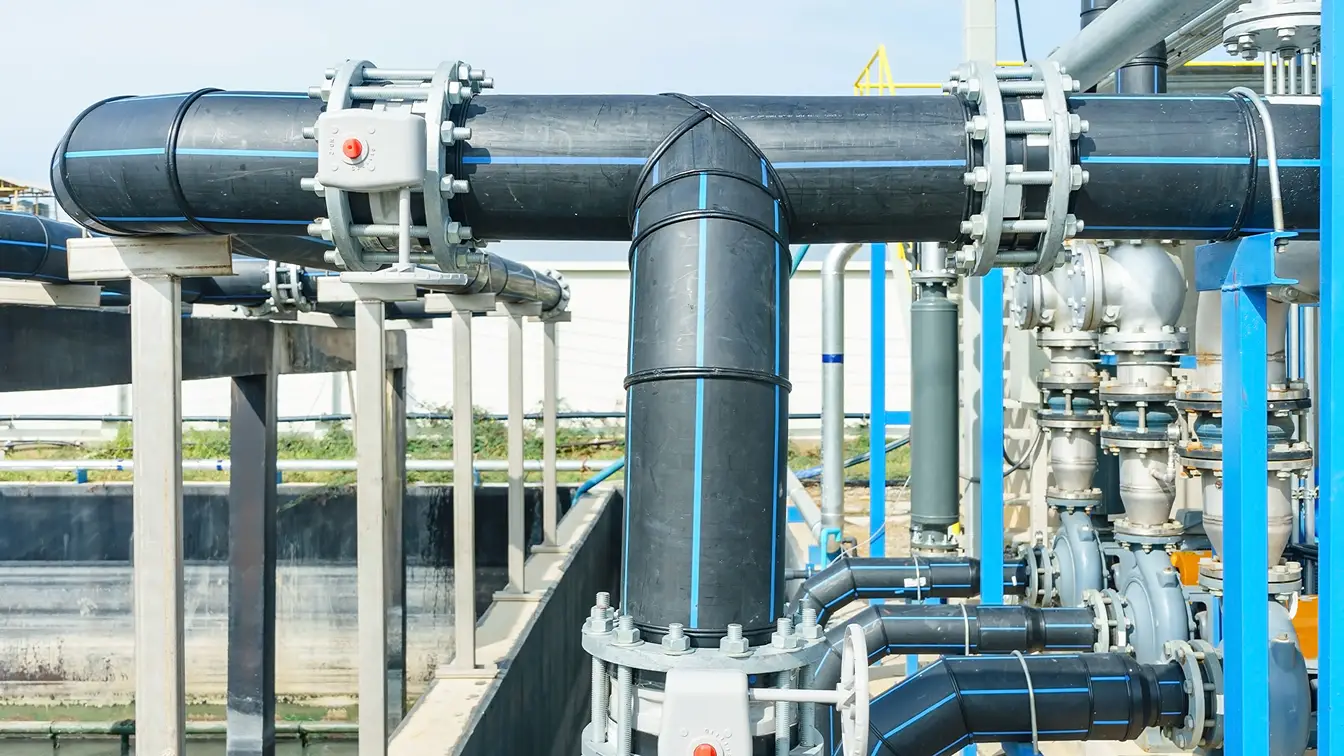

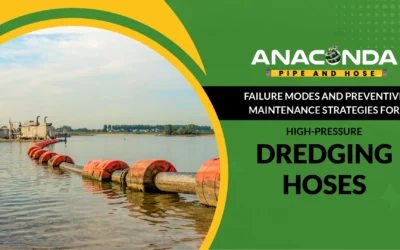
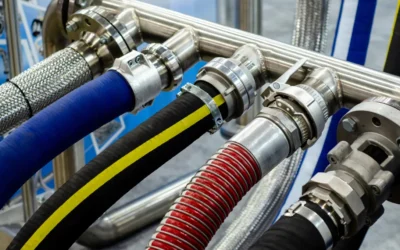
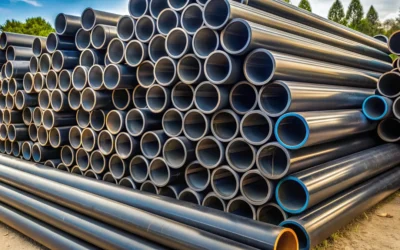
0 Comments